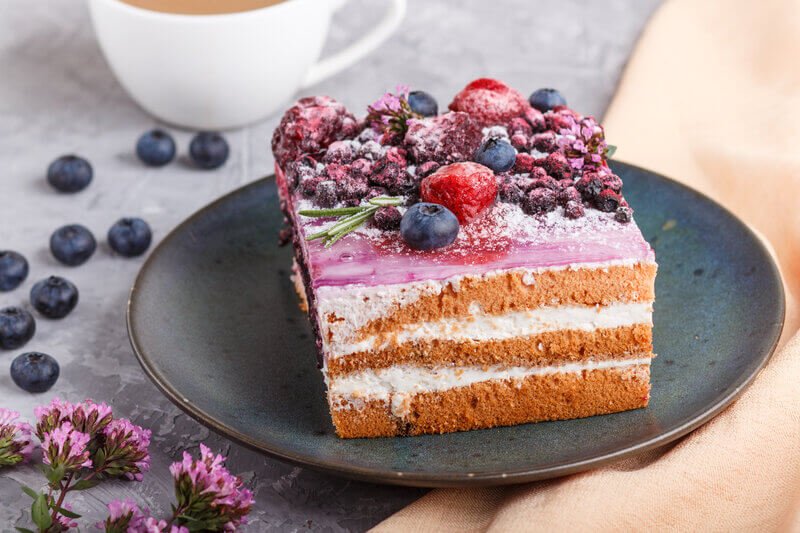For those who choose not to consume milk or are intolerant to dairy products, you may wonder whether there is milk in cake.
Most types of cake are made with milk, meaning you will consume dairy if you eat them. There are exceptions to this rule, though, with the advent of a wide variety of non-dairy milk available to consumers.
Keep reading to learn more about which types of cake generally contain milk and, thus, some amount of dairy. You’ll also find out which alternatives to dairy milk can be used to make cakes.
Is There Milk In Cake?
Milk has long been one of the most fundamental ingredients in baking, especially for baking cakes.
Milk helps make moist, fluffy cakes and creates chemical reactions that turn liquid batter into a solid cake.
In fact, milk proteins coagulate under high heat to solidify the cake.
The milk used in cake batter is sometimes regular milk, while other times it is buttermilk, evaporated milk, or a combination.

Types Of Cake With Milk
Several common cake recipes call for milk:
- Tres leches cake (uses heavy cream, whole milk, and evaporated milk)
- Yellow cake (uses buttermilk or whole milk)
- Chocolate cake (uses whole milk)
- Red velvet cake (uses buttermilk and cream cheese for frosting)
Unless you’re following a strictly dairy-free recipe, chances are it will call for some kind of dairy ingredient.
Related: Is There Milk in Angel Food Cake?
Is There Dairy In Cake?
A cake containing milk, buttermilk, or evaporated milk contains dairy.
Some milk products have more dairy than others. For example, milk (like whole milk) will contain more lactose than buttermilk.
Why Types of Cake Don't Have Milk or Dairy?
You can substitute non-dairy milk for dairy milk in most cake recipes.
Non-dairy milk products like coconut milk, oat milk, soy milk, and almond milk, among others, have a sweetness that makes them ideal for baking cakes.
Aside from being tolerable for lactose-free individuals, these milk varieties are also fairly healthy.
For example, unsweetened almond milk contains fewer calories than most other types of milk - dairy and dairy-free. And coconut milk contains a decent amount of calcium, iron, and other nutrients.
If you're curious about how to make a delicious cake without milk, watch this video from The Cooking Foodie.
Final Thoughts
If you’ve recently switched to a lactose-free diet or have discovered that you are lactose intolerant, you may have wondered, is there milk in cake?
Traditional cake recipes call for some kind of milk (whole milk, buttermilk, heavy cream, etc.).
And since milk is a dairy product, these cakes technically have dairy.
However, you can substitute non-dairy milk, like coconut or soy, into your cake recipes to meet lactose intolerant dietary needs.
This substitution may even benefit you more in terms of health.
